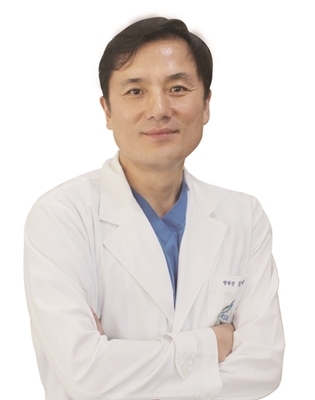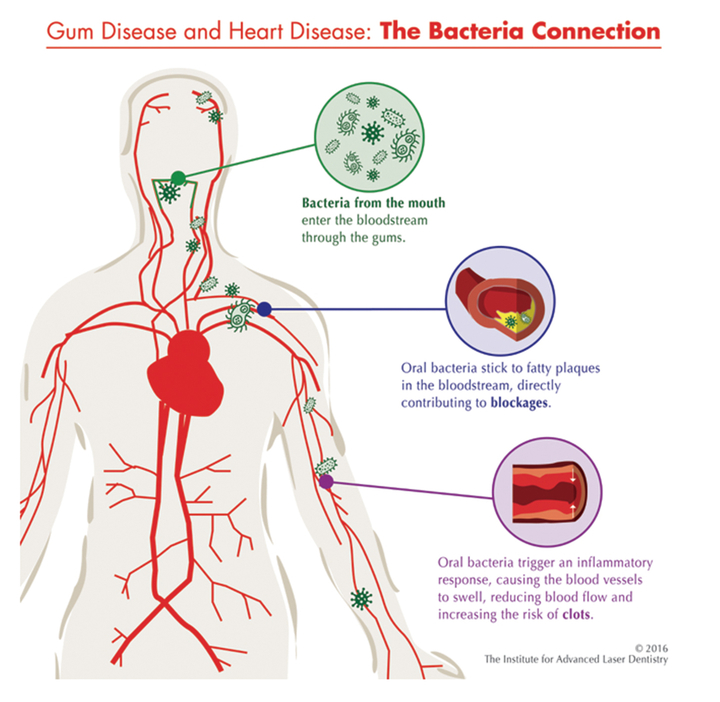
김혜성 이사장(서울치대 졸업, 동대학원 박사)
사과나무의료재단의 이사장이자, 재단 산하 의생명연구소의 미생물 연구자이다.
구강미생물에서 시작해 장내 미생물, 발효 음식의 미생물까지 폭넓게 공부하며 몇 권의 책을 냈고 논문을 발표했다.
『미생물과의 공존』 『입속에서 시작하는 미생물이야기』 『미생물과 공존하는 나는 통생명체다』등 3권이 과학기술부 선정 우수과학도서를 수상했다.
혹 항 고지혈증 약을 드시나요? 건강검진 항목에 늘 있는 혈중 지질농도가 일정 수준을 벗어나면, 내과에서는 혈중 지질을 낮추자고 항고지혈증 약을 권합니다. 성분명이 스타틴(statin)인 이 약은 혈중 지방을 낮추기 위해 간에서 정상적으로 콜레스테롤을 차단하는 과정을 아예 차단해 버리지요.
그래서, 혈중 지방은 낮아질지는 몰라도, 세포막을 포함해 몸 곳곳에 꼭 필요한 생화학 재료인 콜레스테롤이 모자라게 됩니다. 근육통이 생기고 없던 당뇨가 생기고 기억이 깜박깜박해지고 무기력해지는 게 대표적인 부작용입니다. 스타틴을 먹는 사람들이 대개는 나이가 든 사람들이라, 이런 증상을 그냥 나이 먹는 현상이라고 스스로 받아들이지만, 스타틴을 끊고 나면 그 증상이 감쪽같이 좋아진다는 사람들이 많습니다.
스타틴의 부작용은 의학문헌에서 밝히는 것보다 실제론 더 많다는 지적도 있고요.(시나트라 2017) 21세기 들어 점점 비만해지는 인류는 당연히 혈중 지방도 높을 가능성도 커지고, 그래서 스타틴은 1990년대 시장이 등장한 이래 가장 빠르게 시장을 넓혀 제약회사 역사상 가장 많이 팔린 약으로 기록되고 있습니다.
문제는 부작용이 많은 스타틴을 처방하는 논리가 온전하지 않다는 겁니다. 스타틴으로 간에서 지방합성을 차단하는 것은, 혈중 지방이 높으면, 지방이 혈관에 쌓여 혈관을 막을 수 있다는 걱정에서 출발합니다. 이른바 지방가설(lipid hypothesis) 이지요. 이 지방가설은 1970년대부터 미국의 영양학자 안셀 키스(Ansel Keys)로부터 시작하는데, 안셀 키스는 세계 7개 나라를 비교해 보니, 지방 섭취와 심혈관질환의 상관관계가 높다고 주장했습니다.
그게 심혈관질환을 가장 겁내는 미국의 언론들에게 화들짝 포착되고, 제약회사들이 스타틴을 만들고, 의료관련 학회는 스타틴의 가이드라인을 만들어 일선 현장에 보급하게 되면서 지방가설은 심혈관질환의 병인론으로 공고화됩니다. 하지만, 이 지방가설은, 이름에서도 보다시피 아직도 검증이 필요한 가설 수준입니다. 최근으로 올수록 지방은 점차 누명을 벗어가고 있고(Ravnskov 2008), 이것이 우리나라 공중파 방송에도 다큐멘터리로 보도된 바 있습니다.
지방은 그 자체가 문제라기보다는 전체적인 식습관과 비만, 생활습관 등의 문제가 복합적으로 심혈관문제를 가져오는 것이고, 그래서 스타틴과 같은 약보다는 건강한 생활습관으로 건강을 지키는 것이 맞는다는 것입니다. 개인적으로 저 역시 LDL 수치가 기준치보다 높고 미국심장협회의 가이드라인에 스타틴 복용대상자이지만, 약 먹는 것은 전혀 고려하고 있지 않습니다.
그러면, 여전히 걱정거리인 심혈관문제를 낮추려면 무엇이 중요할까요? 거의 폐기 지경의 지방가설 대신 새로이 부각되고 있는 논리가 바로 염증입니다.(Ruparelia, Chai et al. 2017) 심혈관의 염증이 혈관을 막는다는 거죠. 실제로 TNFα 나 IL-1β 같은 염증성사이토카인이 높은 사람들이 심혈관질환에 걸릴 가능성이 높다는 연구가 많습니다.(Moss and Ramji 2016) 그래서 조금씩 죽종은 혈관의 만성염증성질환(Chronic inflammatory disorder)으로 인식되어가는 중입니다.(Ramji, Davies et al. 2015)
그런데, 염증(inflammation)은 워낙 광범한 개념이라, 한 번 더 의문이 생깁니다. 그럼, 혈관내피세포에 염증이 생기는 원인이 뭔가? 라는 거죠. 1차적으로 박테리아가 거론됨이 자연스럽습니다. 우리 몸은 구강과 장을 포함한 소화관에 거의 100조에 달하는 세균이 살고 있고, 우리 몸은 그런 상주세균과의 긴장과 평화를 통해 건강을 유지하는 통생명체(holobiont) 이니까요.
그래서 피부와 점막에 의해 차단되던 상주세균들이 피부나 점막의 상처 같이 일정한 틈이 생기면 그 틈을 비집고 혈중으로 침투하는 현상(균혈증, bacteremia) 역시 일상적으로 늘 있을 수 있습니다. 다만, 그런 균혈상태가 우리 몸의 면역세포를 포함한 방어 능력에 의해 제어되고 있을 뿐이죠. 그런데, 그 방어 능력이 훼손되거나 침투하는 세균의 부담(bacterial burden)이 너무 과하게 되면, 우리 몸 곳곳에 문제가 생길 가능성이 크고, 심혈관질환도 그런 문제 중 하나라는 겁니다. 심혈관의 염증의 결과가 너무 심각해 우리가 늘 알람을 켜고 있는 거고요.
그럼 한 번 들어가 보죠. 대체 무슨 세균들이 우리 몸에 여러 염증을 일으키는 것인가? 실은 모든 세균이 그럴 가능성이 있습니다. 우리 몸의 세균은, 인간이 지구를 터전 삼아 살아가듯, 내 몸을 터전 삼아 자신의 생존과 번식을 위한 활동을 하는데, 그 세균들의 생명활동이 결과적으로 내 몸에 좋으면 유익균이고 안 좋으면 병적 세균일 뿐이죠.
그래서 대부분의 내 몸 세균들은 잠재적으로 언제나 염증을 일으킬 수 있는 기회감염균(opportunistic pathogen) 들이기도 합니다. 그렇더라도, 현재 심혈관에 염증을 일으킨다고 과학자들의 눈에 포착된 세균들은 헬리코박터(Helicobacter) 클라미디아(Chlamydia), 그리고 구강에 사는 진지발리스 등입니다.(Khademi, Vaez et al. 2019)
그중에서도 특히 진지발리스는 심혈관염증을 일으키는 문제아로 점점 찍혀가고 있는 중입니다. 심혈관질환으로 사망한 사람의 심혈관에서 100% 진지발리스가 검출됩니다.(Mougeot, Stevens et al. 2017) 동물실험에서도 진지발리스를 접종해 균혈증을 유발한 돼지의 혈관에서 염증이 생기고 동맥이 막힙니다.(Brodala, Merricks et al. 2005)
치주질환이 생긴 환자들이 칫솔질 같은 일상생활에서도 생길 수 있는 균혈증에 의해 동맥경화의 위험에 노출될 수 있다는 추론이 가능합니다. 이런 이유로 pubmed에 치주질환(periodontitis)과 심혈관질환(cardiovascular)을 연관시키는 연구를 검색해 보면 폭증하고 있는 것을 볼 수 있습니다.
결론적으로 저는 고지혈증 환자분들께 이렇게 권하고 싶습니다. 주치의에게 부작용 많은 스타틴을 꼭 복용해야 하는지 상의하시라고, 대신 건강한 음식, 건강한 운동을 약으로 삼으라고, 또 구강위생관리에 특히 신경 쓰시라고요.

Brodala, N., et al. (2005). "Porphyromonas gingivalis bacteremia induces coronary and aortic atherosclerosis in normocholesterolemic and hypercholesterolemic pigs." 25(7): 1446-1451.
Khademi, F., et al. (2019). "Bacterial infections are associated with cardiovascular disease in Iran: a meta-analysis." Archives of medical science : AMS 15(4): 902-911.
INTRODUCTION: The present study aimed to assess the prevalence and association of various bacterial infections with cardiovascular disease (CVD) in Iran. MATERIAL AND METHODS: An electronic search was performed using related keywords in the national and international databases up to June 30, 2017. Out of the 1807 articles found on the associations between bacterial infections and CVD, 20 relevant studies were selected for the meta-analysis. RESULTS: The prevalence of bacterial infections was higher in case groups compared with the control groups. Odds ratios for assessing the association between Chlamydia pneumonia infection and CVD based on PCR, IgG and IgA tests were 7.420 (95% CI: 3.088-17.827), 3.710 (95% CI: 1.361-10.115) and 2.492 (95% CI: 1.305-4.756), respectively. Moreover, the calculated odds ratio for Mycoplasma pneumonia infection was 1.815 (95% CI: 0.973-3.386). For Helicobacter pylori infection, odds ratios based on IgG and IgA tests were 3.160 (95% CI: 1.957-5.102) and 0.643 (95% CI: 0.414-0.999), respectively. CONCLUSIONS: The present meta-analysis suggested that there was a significant association between H. pylori, C. pneumonia and M. pneumonia infections and CVD in Iran. These findings confirm the potential role of bacterial infections as predisposing factors for CVD.
Moss, J. W. and D. P. Ramji (2016). "Cytokines: roles in atherosclerosis disease progression and potential therapeutic targets." Future medicinal chemistry 8(11): 1317-1330.
Atherosclerosis, the primary cause of cardiovascular disease (CVD), is a chronic inflammatory disorder in the walls of medium and large arteries. CVD is currently responsible for about one in three global deaths and this is expected to rise in the future due to an increase in the prevalence of obesity and diabetes. Current therapies for atherosclerosis mainly modulate lipid homeostasis and while successful at reducing the risk of a CVD-related death, they are associated with considerable residual risk and various side effects. There is, therefore, a need for alternative therapies aimed at regulating inflammation in order to reduce atherogenesis. This review will highlight the key role cytokines play during disease progression as well as potential therapeutic strategies to target them.
Mougeot, J. C., et al. (2017). "Porphyromonas gingivalis is the most abundant species detected in coronary and femoral arteries." Journal of Oral Microbiology 9(1): 1281562.
Ramji, D. P., et al. (2015). "Cytokines in atherosclerosis: Key players in all stages of disease and promising therapeutic targets." 26(6): 673-685.
Ravnskov, U. (2008). "The fallacies of the lipid hypothesis." Scandinavian cardiovascular journal : SCJ 42: 236-239.
Ruparelia, N., et al. (2017). "Inflammatory processes in cardiovascular disease: a route to targeted therapies." Nature Reviews Cardiology 14(3): 133-144.
Inflammation and its failure to resolve are firmly established as central to the development and complications of several cardiovascular diseasesTargeting of inflammatory processes in experimental models has been demonstrated to be beneficial in attenuating myocardial and arterial injury, reducing disease progression, and promoting healing, but clinical translation has been disappointingCurrent tools to measure 'inflammation' are nonspecific and represent downstream sequelae of biological processes, but provide little insight into disease state, site, or activation pathwaysContemporary molecular techniques (such as proteomics and gene-expression analysis) improve our ability to characterize underlying biological processes, and identify activation pathways as biomarkers and as a basis to develop new therapeuticsNoninvasive imaging tools enable the identification of activation of specific pathways and their sites, and can be used to monitor response to therapy
시나트라, 스. (2017). 콜레스테롤 수치에 속지마라, 예문아카이브.
